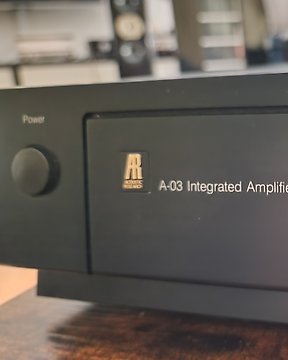
Acoustic Research - AR-03 - Zintegrowany wzmacniacz półprzewodnikowy
Nr 83938595

Nr 83938595

Tannoy Monitor Gold 15in are the largest (and most expensive) drivers in the Monitor Gold range. The “Monitor Gold 15” is a common name, but their factory model name is LSU/HF/15/8. They were are successors to Tannoy Monitor Red 15, and were first launched in 1967. The reviewed pair is from 1968, therefore, from the second year of production.
These drivers feature unique ‘Dual Concentric’ construction (visible on the scan of the sales brochure below), which ultimately means that we have two drivers (tweeter/mid-bass) combined in one driver and working on the same axis. This itself would not be so unique as there are many other coaxial drivers out there, however, in Tannoys, the tweeter diaphragm is placed behind the bass driver’s magnet and the same magnet is used to power both – the bass and the tweeter diaphragms. Furthermore, the tweeter diaphragm is positioned in inverted phase. The airwaves produced by it travel through the ‘Pepper Pot’ phase plug, and then, they are ‘acoustically amplified’ in the metal horn throat (inside the magnet), and finally ‘amplified’ further by the bass diaphragm, which acts as a horn extension. Horns can usually be fond in the PA speakers, however, there are number of HiFi manufacturers that use horns with very good results (e.g. Klipsch, JBL, Altec, Lowther) and Tannoy is one of them. This is a rather basic description, but it gives a good overview of how these drivers work. People who are into DIY may find it strange, that a heavy paper cone (LF unit) is crossing over with the efficient HF unit at 1kHz, as this contradicts with best practices that can be found in many speaker building books. But, it works. And it works rather well! Having two diaphragms on one axis (in theory) should result in better pin point imaging than in traditional speaker designs, as the whole frequency range originates at one point source of sound, instead of coming from two or three different drivers placed somewhere on the speaker face.
Couple words about their history… Tannoy Monitor Gold range was very popular in the recording studios, in 1970s. Many famous studios (including Abbey Road in London) tannoy monitor gold 15 speakers review 09 in recording studioused these speakers for mixing – check the photo of the left, found somewhere on the internet – pair of Tannoy Lancasters, presumably with MG15 inside. Numerous legendary albums were mixed using these speakers, so if you have a pair at home, you may be hearing the recording in a very similar way to the person who mixed it (this isn’t always a good news though ;). Also, I have found something that indicates that some of thetannoy monitor gold 15 speakers review 10 ocean colour scene recording studios may have been using these speakers in more modern times. The photo on the right is an inner front cover of the Marchin’ Already album by Ocean Colour Scene. Looks familiar? Recording was made in 1997. Apart from studio monitoring, these drivers were also used in higher end of domestic market. They were used in large horn loaded enclosures such as Tannoy GRF, Tannoy GRF Professional and Tannoy Autograph.
TANNOY MONITOR GOLD 15 SPECS
Frequency Response: 23 – 20,000Hz
Sensitivity: 92dB
Impedance: 8Ω (5Ω min.)
Power Capacity: 50W
High & Low Frequency Driver: LSU/HF/15/8 380mm (15″) Dual Concentric with 51mm (2″) Aluminium Dome Compression Driver and 380mm (15″) Paper Diaphragm
Crossover Frequencies: 1,000Hz
Free Air Resonance (FS): 26Hz
Weight: 10kg (each driver)
Production Year: 1968
I have tested both drivers and they measure perfectly. There are no cross overs included just the 2 monitors. No cables. They are easily available on Facebook and mainly tannoy. I have upgraded to Westminster.
The packing will be slightly more due to shape and safe packaging.
Jak kupować w serwisie Catawiki
1. Odkryj coś wyjątkowego
2. Złóż najwyższą ofertę
3. Dokonaj bezpiecznej płatności